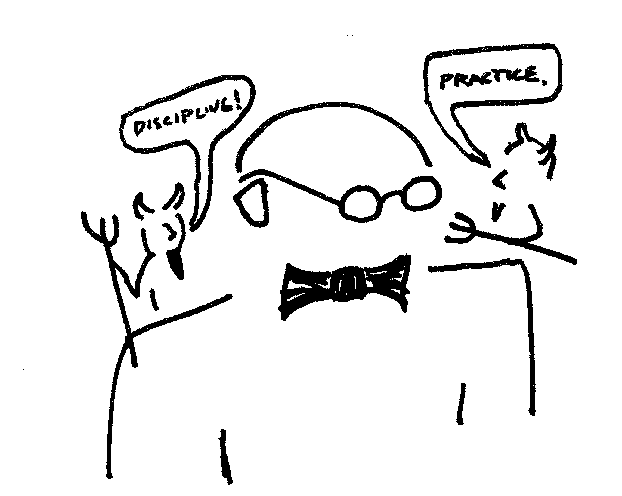Architects love dichotomies, and one dichotomy central to architectural discourse is the distinction between discipline and practice. The practice of architecture involves the everyday dramas of construction contracts, “value engineering,” waterproofing details, and building codes. The Discipline of Architecture, in contrast, involves the high Shakespearean romance: design as an intrinsic ideological Good to be pursued in the abstract; one’s responsibilities to the insular world of Architecture; language and ethical criteria opaque and mysterious to laypeople; and notions of design quality and integrity almost entirely divorced from contemptibly commonplace facts like whether or not a building leaks.

The dichotomy between discipline and practice is destructive because it cleaves architects in two and pits the two halves against each other in pursuit of often contradictory ends; it makes clients into victims, enemies, or tools ancillary to the narrative of the architect’s “higher pursuits” in the discipline. Clients would argue that architects should define the goal of the discipline as providing high-quality service to clients, but architects will queue up to explain the ways in which clients are shortsighted, and the needs of society and Culture can only be met by designers following a more advanced set of priorities.
Most critics of architecture are not practitioners, and therefore are concerned only with the discipline and not the practice. They choose to examine the ideology of the work, but not the work’s effects. Mainstream 20th-Century architectural history is the story of the High-Modernist heroes of the discipline, their triumphs and defeats. It is implicit in the Low-Modernist body of work, however, grounded as it was not in the academy but the street corner, that practice is its own end; and choosing to study the Lower Modernisms, the designers of which remain unknown and indeed irrelevant to the story, is necessarily a study of that practice.
Architectural book stores are heavy with volumes about the discipline, the history and philosophy of architecture, but practical guidance in the design of buildings is perilously hard to come by. Writing not as a professional critic but as a practitioner of architecture, let me be explicit – a fundamental goal of project AB1006, “the Lower Modernisms,” is to distill out of the jumble of a city’s stock of ignored and unloved Mid-Century buildings a how-to guide for those designers capable of appreciating what the facile practitioners of a more creative and vital period of architectural practice were able to accomplish.
The Lomo practitioners lacked the means and thus the privilege of following the ideologically rigorous High Modernism of the elite that designed museums, corporate headquarters and houses for rich people. Designing a corner liquor store calls for an approach different from and more economical than designing the Salk Institute. The Lomo practitioner took these constraints as an opportunity to pursue the maximum effect with the minimum of means. The professionalism and creativity that Lomo designers brought to these efforts, the techniques honed in years of practice, provide examples that continue to be of value today for designers compelled, as ever, to work within limited means.
The average architect in 2011 Los Angeles working on everyday pennypinching buildings typically draws up a boring stucco box of a building; but his or her counterpart in 1961 found ways to produce a stucco building slightly less boring, marginally more interesting, reflecting a greater diversity and fluency of architectural style. A nicely detailed stucco building from 1961 has a great deal more in common with what most of us are doing than the architectural concrete masterpieces by Le Corbusier or Tadao Ando that we marvel over outside office hours.
The Lomo practitioners faced the same type of challenges as designers do today – tight budgets, and the conservative tastes and low commitment to quality of clients. In comparison to architects today, they faced these challenges with derring-do and chutzpah. Today’s crap stucco buildings, and the cities we build out of them, stand to benefit from an expanded historical perspective on the part of architects. Designing cheap stucco buildings should be not a disappointment, but rather a meaningful participation in the rich history and legacy of crap stucco buildings.
Leave a Reply